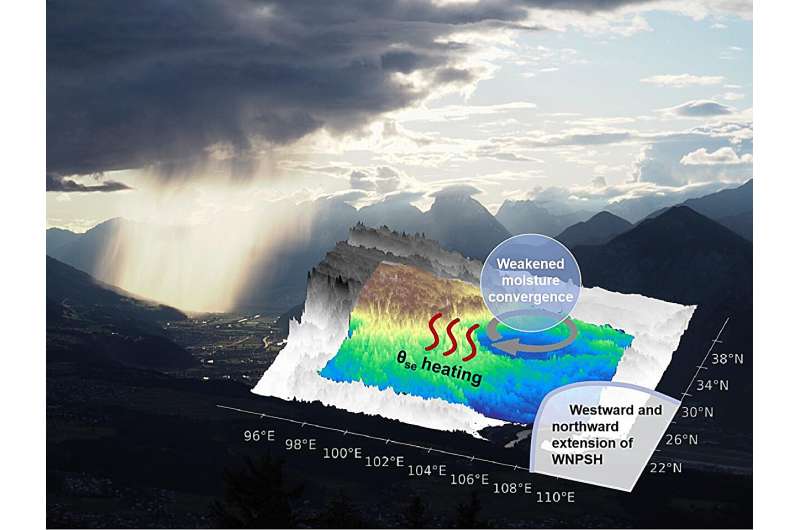This article has been reviewed according to Science X's editorial process and policies. Editors have highlighted the following attributes while ensuring the content's credibility:
fact-checked
trusted source
proofread
Significant increase in short-duration extreme precipitation over mountainous areas in China seen under global warming

A new study led by Prof. Xiaopeng Cui from the Institute of Atmospheric Physics at the Chinese Academy of Sciences, in collaboration with experts from the National Meteorological Center of China, has uncovered a startling trend of increased short-duration extreme precipitation over mountainous regions in Southwest China. These findings shed light on the pressing issue of climate change and its significant impact on extreme weather events.
In a world grappling with the consequences of global warming, the research team's investigation reveals a disconcerting reality: while total global precipitation increases, the intensification of short-duration extreme precipitation outpaces the overall rise. This phenomenon is especially pronounced in the complex topography of Southwest China, encompassing Sichuan, Chongqing, Yunnan, and Guizhou, where multiple climatic systems converge.
The findings are published in Journal of Applied Meteorology and Climatology. Prof. Cui underscores the gravity of the situation, stating, "In warm seasons, heavy precipitation frequently plagues Southwest China, resulting in severe hydrological and geological disasters. Our study has uncovered a concerning trend of extreme hourly precipitation increasing in the region, a pattern that is more susceptible to global warming."
The research, spanning from 1981 to 2020, delves into the spatiotemporal variations of extreme hourly precipitation events (EHPs) during warm seasons and the underlying mechanisms. Results point to a worrying trend, with EHPs exhibiting a stronger increase than total precipitation, predominantly in areas with terrain heights above 500 meters. Furthermore, EHPs primarily occur between June and August, demonstrating a bimodal structure in diurnal variation.
The study finds that EHPs often occur accompanied by anomalous changes in circulation, including positive anomalies of pseudo-equivalent potential temperature, humidity, geopotential height, and anomalous cyclonic circulation in the low-level wind field. The westward and northward extension of the western North Pacific subtropical high as well as pseudo-equivalent potential temperature rise are believed to be a primary driver of the surge of EHPs.
The consequences of this increase are far-reaching, as short-duration extreme precipitation events can lead to flash floods and landslides, endangering lives and ecosystems, particularly in mountainous areas. Prof. Cui's team underscores that this study is a crucial call to action, asserting that "the characteristics, changes, mechanisms, and predictions of short-duration extreme precipitation in mountainous areas require high attention."
More information: Rouyi Jiang et al, A 40-year statistics of warm-season extreme hourly precipitation over Southwest China, Journal of Applied Meteorology and Climatology (2023). DOI: 10.1175/JAMC-D-23-0018.1
Provided by Chinese Academy of Sciences





















